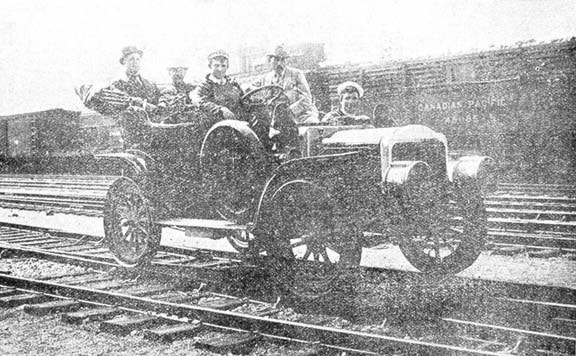Jim Cameron
"Joseph's Prairie 25 years ago consisted of the old Galbraith ranch, log dwelling house and store, stables and cattle sheds and one small log building occupied by Mr. John Gustavus Norris, the customs house officer...In 1886, my father, the late Colonel Baker, purchased the ranch and named the place after an old family property in England.
Until 1897, Cranbrook was run as a cattle ranch and farm, and was more or less a rendezvous for miners and trappers from the Moyie, Perry Creek and St. Mary's countries.
The population of the country at large consisted of a few scattered farmers and miners, and one and all waiting for such time as some railway company saw fit to come and build a road through what we all knew was a rich country...To give an idea of the confidence in the future of our town, the sales of town lots during the month of October last amounted to $17,500 [between $330-900,000 today].
This then, in a nutshell, is the pre-history of Cranbrook as remembered by Valentine Hyde Baker from the Herald newspaper of December 15, 1910.

V. Hyde Baker — he rarely used his first name — arrived at Joseph Prairie when he was a young man. Although in later years he certainly led a life of leisure, he spent his younger days working on the farm and in the store, often filling in for his father for lengthy periods when James was travelling as Member of Parliament for the district or otherwise engaged.
Hyde carried on an extensive local fur trade, became conversant in the Ktunaxa language and was often seen in wearing moccasins as part of his workaday wardrobe. Hyde became the Cranbrook townsite agent with the coming of the railway in 1898, the office of which originally stood on the site of the present day Cranbrook Photo building.
As such, Hyde Baker, chief agent, principal landowner, son of the town founder and landed gentry in his own right, was the very symbol of success in a rough pioneer town. As Cranbrook grew, there were many buildings on Baker Street and in the residential area that were either financed, owned, leased, rented or bought and sold by Hyde Baker on behalf of the local townsite company of which both he and the Canadian Pacific Railway were principal owners.
Further, he held sway over thousands of acres throughout the Kootenays including much of the land along the Kootenay River. He financed the construction of the Cranbrook Hotel, the first building in the city (a section of which still stands today), Miner's Hardware (which also still stands) and numerous other stores and houses.
Hyde travelled to England in1899 and returned with his new bride Ida with whom he had three children: Olive born in 1900, Hugh Samuel in 1905 and Edward Valentine in 1913. The children spent their younger years in Cranbrook under the watchful eye of nurses and governesses and, as they grew older, attended school in England.
Hyde Baker's actions were followed closely by many of the townsfolk of the day. From his renovations to the old Baker home in what is now Baker Park in 1900, in which he added a kitchen and a smoking room, to his entertainments at home (including the newest fad of ping-pong), his fishing and hunting expeditions, his wife's socials and flower shows and even the death of his old dog Frog (a fixture at the townsite office for many years).
If it involved Hyde Baker, it was news.
His father died in England in 1906, leaving Hyde in sole possession of the Cranbrook estate. He continued in his father's footsteps with notable success and style but without his father's bent for politics save for a short stint on Cranbrook city council in 1906.
That same year he became one of the city's first auto enthusiasts when he travelled to Spokane and returned with a "magnificent new 30 horsepower auto of the Rambler pattern." He spent two weeks with an "expert" to become thoroughly familiar with the machine and proceeded to drive it over as much of the district as possible.
He purchased a White steam-powered car in 1908 and continued to upgrade throughout his remaining years in the city, sometimes chauffeured by a local driver/mechanic and other times taking the wheel himself, including a trip from San Francisco to Mexico in 1912, while his wife and family vacationed in Los Angeles.
He maintained ties with and entertained numerous dignitaries and English nobility over the years including Lord Cobham, for whom Cranbrook's Cobham Avenue is named, and Canadian Governor-General Lord Earl Grey, for whom the St. Mary Grey Creek Pass is named. In fact, Hyde Street in Cranbrook was named for Hyde Baker. It required the use of his given name so as not to confuse it with Baker Street, named for his father.
Although certainly a man of ease, he was always conscious of his obligation to maintain the family estate as exemplified in a letter to the Herald in June, 1907. Up to that time the Cranbrook General Cemetery was on land owned and maintained by the Baker family.
Hyde offered it to the city at a cost of $200.00 an acre, a price Mayor Findlay declared exorbitant, offering to sell land of his own at a lower rate. Hyde responded "I have been under great expense and inconvenience in keeping up this cemetery...I thought that naturally the city authorities would be the proper people to look after it. As each grave is sold for five dollars, and one acre can be divided into 960 lots, the price asked by me does not seem such an "exorbitant" figure as the mayor would have people believe."
The city bought the property.
Hyde Baker left Cranbrook in 1915 and returned to the family home at Parkstone in Dorset, England, where he died in October, 1932
